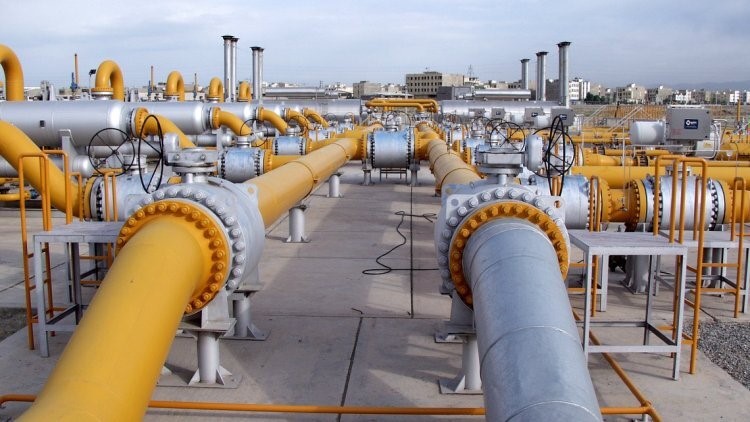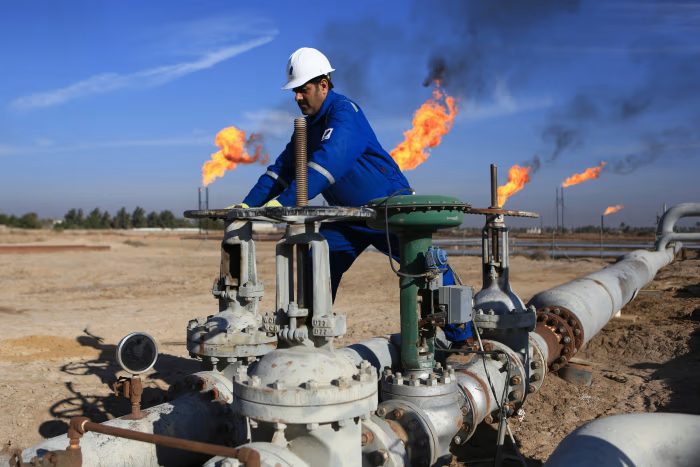Iraq is embarking on a transformative journey to achieve energy independence by 2028, aiming to overcome decades Imports to Independence of reliance on imports and chronic power shortages. Through strategic partnerships, infrastructure upgrades, and a strong push toward renewable energy, the nation is laying the groundwork for a more stable and self-sufficient future.
For years, Iraq has struggled with frequent blackouts, inefficient energy networks, and heavy dependence on Iranian gas to fuel its power plants. Now, facing both internal pressure and external challenges, the government is actively reshaping its energy landscape.
Reducing Dependence on Iranian Gas
Historically, Iraq imported large volumes of natural gas from neighboring Iran to meet its growing electricity needs. However, this dependence has proven risky, particularly under the weight of U.S. sanctions on Iran and Iran’s own domestic energy shortages, which have led to supply disruptions.
To address this vulnerability, Iraq is seeking alternative energy partners. A major step in this direction is the leasing of a floating liquefied natural gas (LNG) terminal from Breeze Investment, a UAE-based company. Scheduled to become operational by mid-2025 at the port of Khor al-Zubair, this terminal is expected to supply 14 million cubic meters of gas per day. That figure represents about one-third of the gas Iraq currently imports from Iran.

Iraq is also in advanced discussions with Qatar and Oman to secure LNG supplies. By diversifying its gas sources, Iraq hopes to guarantee a more stable and politically neutral energy flow, essential for national security and economic development.
Expanding Domestic Energy Production
While importing LNG offers short-term relief, Iraq is equally focused on boosting its own domestic energy production. Recently, the government signed preliminary agreements for 13 oil and gas exploration blocks. These deals, which could add 750,000 barrels of crude oil and 850 million standard cubic feet of gas per day, are critical to strengthening Iraq’s energy independence.
These agreements mark a shift from Iraq’s traditional technical service contracts to profit-sharing models, making the energy sector more attractive to international investors. Notably, Chinese companies have shown significant interest, further highlighting Iraq’s growing position in the global energy market.
Adding momentum to these efforts, British energy giant BP recently finalized a $25 billion agreement with Iraq to redevelop four major oil and gas fields in the Kirkuk region. These fields, once battered by years of conflict and neglect, are estimated to hold over three billion barrels of oil and significant gas reserves. The redevelopment project will not only increase Iraq’s crude output but also create jobs and stimulate local economies.
Embracing Renewable Energy
Understanding the urgent need to transition toward cleaner energy, Iraq is also making substantial investments in renewables. In a landmark collaboration, Iraq has partnered with TotalEnergies and QatarEnergy to build a massive 1.25-gigawatt solar power plant in the southern Basra region.
This solar project, a centerpiece of the $27 billion Gas Growth Integrated Project (GGIP), will feature around two million high-efficiency bifacial solar panels. Upon completion between 2025 and 2027, it will supply clean electricity to approximately 350,000 homes — a vital contribution to the country’s green energy ambitions.
Moreover, Iraq has signed another major renewable deal with UAE-based Masdar. Under this agreement, Masdar will help develop 2 gigawatts of renewable power projects across Iraq. These projects contribute to Iraq’s broader goal of generating 10 gigawatts of green energy by 2025.
The expansion of renewable energy infrastructure not only diversifies Iraq’s power sources but also helps the country meet global climate goals, including reductions in greenhouse gas emissions and gas flaring.
Strengthening Regional Energy Connections
In addition to boosting domestic production, Iraq is building strategic partnerships with its neighbors to strengthen energy security. The Iraq-Gulf Cooperation Council electricity connection is expected to come online by the end of 2024. This new link will add an initial 500 megawatts to Iraq’s grid, providing much-needed support during peak consumption periods.
Separately, Iraq is developing a power connection with Saudi Arabia that is expected to supply an additional 1,000 megawatts of electricity. These regional interconnections are crucial for stabilizing Iraq’s grid, particularly during the sweltering summer months when power demand soars and blackouts are most frequent.
Such cross-border projects not only enhance energy security but also promote greater economic and political cooperation in a historically volatile region.
Modernizing Power Infrastructure
Beyond sourcing more energy, Iraq is taking serious steps to modernize its outdated and inefficient power infrastructure. Major international players like GE Vernova are working closely with Iraq’s Ministry of Electricity to upgrade existing power plants.
These upgrades involve installing advanced technologies that improve the efficiency and output of older gas and steam turbines. It is estimated that more than 500 megawatts of additional electricity will be added to Iraq’s grid by the summer of 2025 as a result of these enhancements.
Modernized infrastructure means fewer transmission losses, improved reliability, and a stronger foundation for integrating renewable energy sources into the national grid.
Aiming for Energy Independence by 2028
Iraq’s ambitious goal is clear: achieve energy independence by 2028. This strategy involves several key components — reducing reliance on foreign gas imports, cutting gas flaring, increasing oil and gas production, expanding renewable capacity, and modernizing infrastructure.
One of the critical objectives is to dramatically cut gas flaring — the wasteful burning of natural gas associated with oil extraction. Iraq aims to reduce gas flaring to just 20% by 2025, a sharp drop from 47% in 2021. Reducing flaring will not only help Iraq utilize more of its own natural gas but also contribute significantly to environmental protection.
New steam and combined-cycle gas power plants are also being constructed to generate around 35,000 megawatts of electricity. This new generation capacity is expected to meet the demands of a rapidly growing population and support industrial development across the country.
Challenges Ahead
While the road ahead looks promising, Iraq faces significant challenges. Political instability, bureaucratic hurdles, corruption, and ongoing security concerns could delay or complicate some of these ambitious projects. The successful implementation of energy reforms will require strong leadership, transparent governance, and sustained investment.
Nevertheless, Iraq’s comprehensive approach — blending short-term fixes with long-term structural changes — provides a solid framework for success. If executed properly, the plan could transform Iraq from an energy-dependent nation into a self-reliant regional powerhouse within the next few years.
Conclusion
Iraq’s path to energy security is finally taking shape. Through a mix of diversified energy imports, expanded domestic production, renewable energy investments, and infrastructure modernization, the country is well on its way to achieving energy independence.
For a nation long plagued by energy crises and political turbulence, the stakes could not be higher. Yet, Iraq’s latest efforts offer hope — not just for a brighter and more reliable power supply, but for a future defined by stability, prosperity, and national pride.
M23 Rebels Agree to Ceasefire in Eastern Congo Amid Peace Talks



